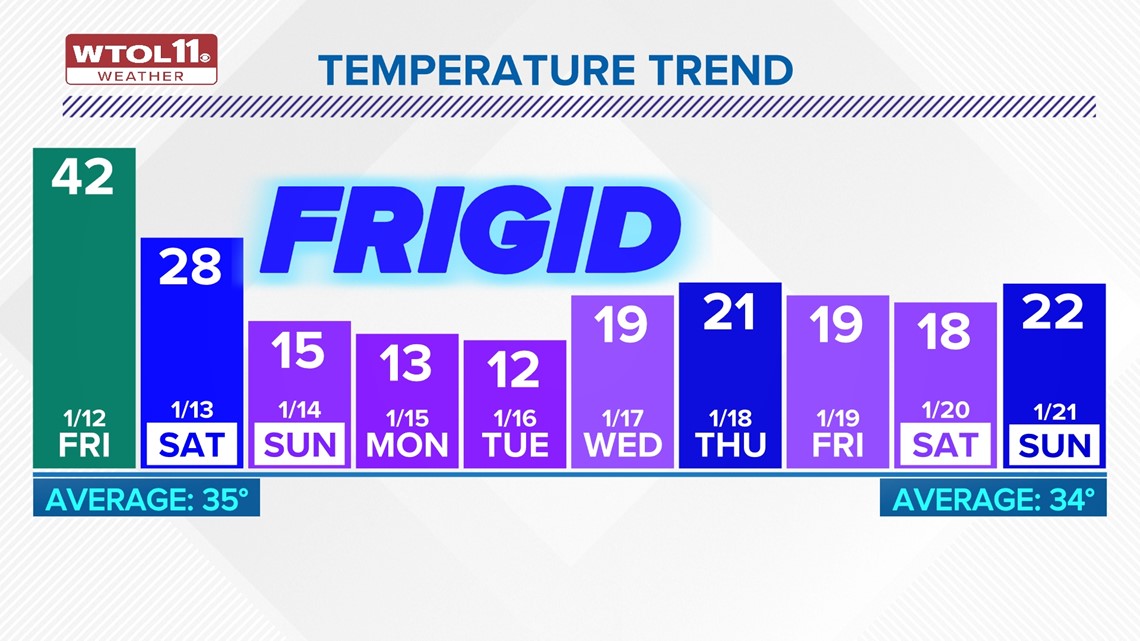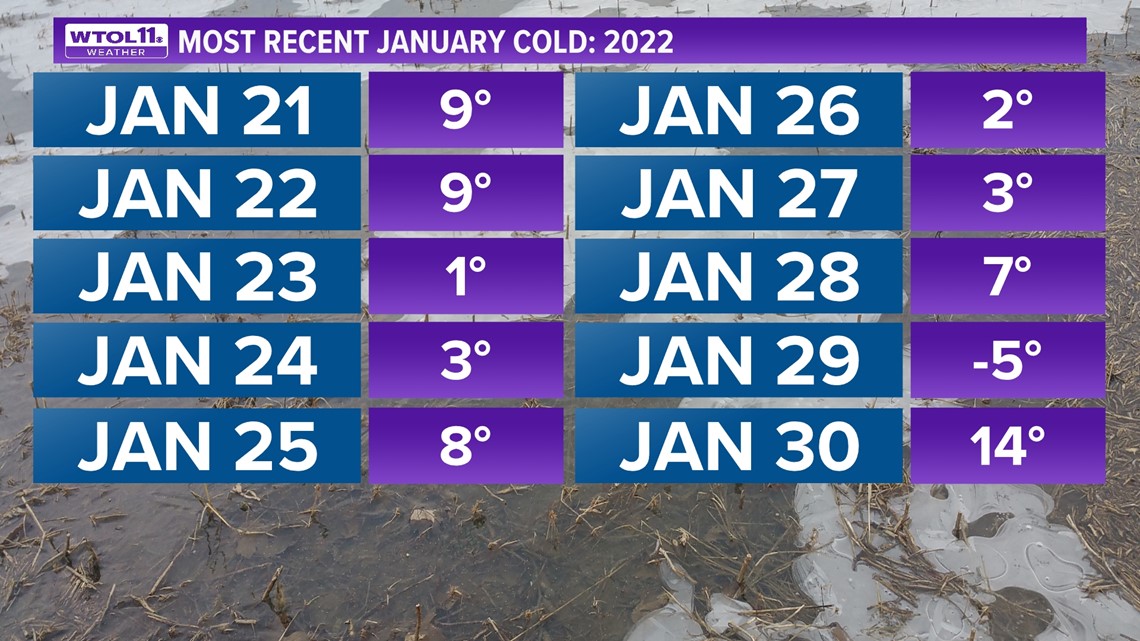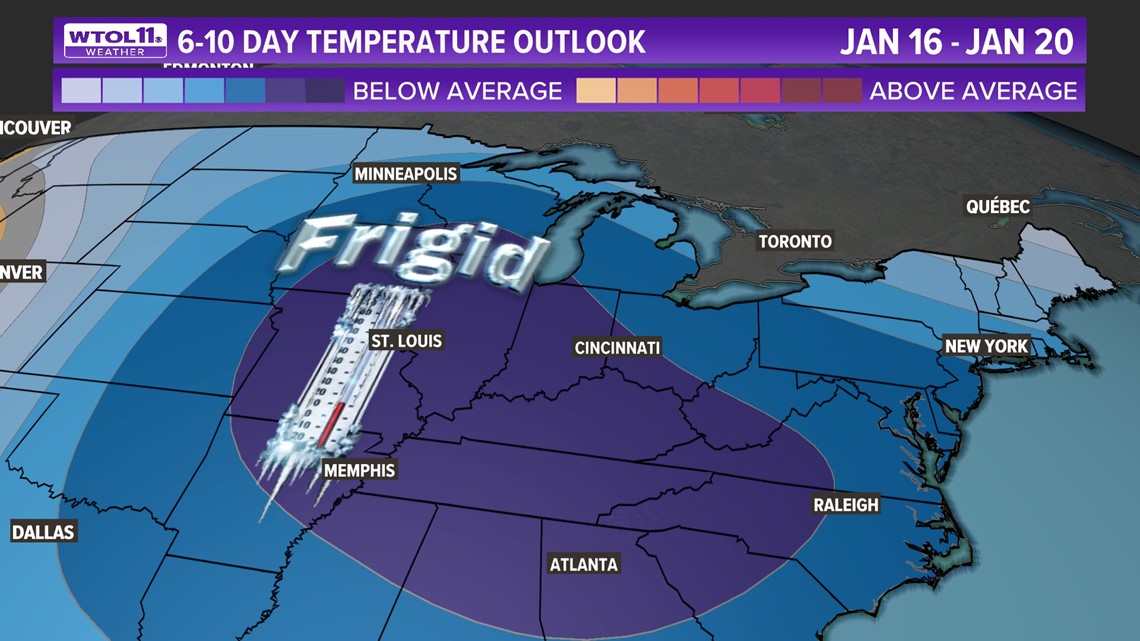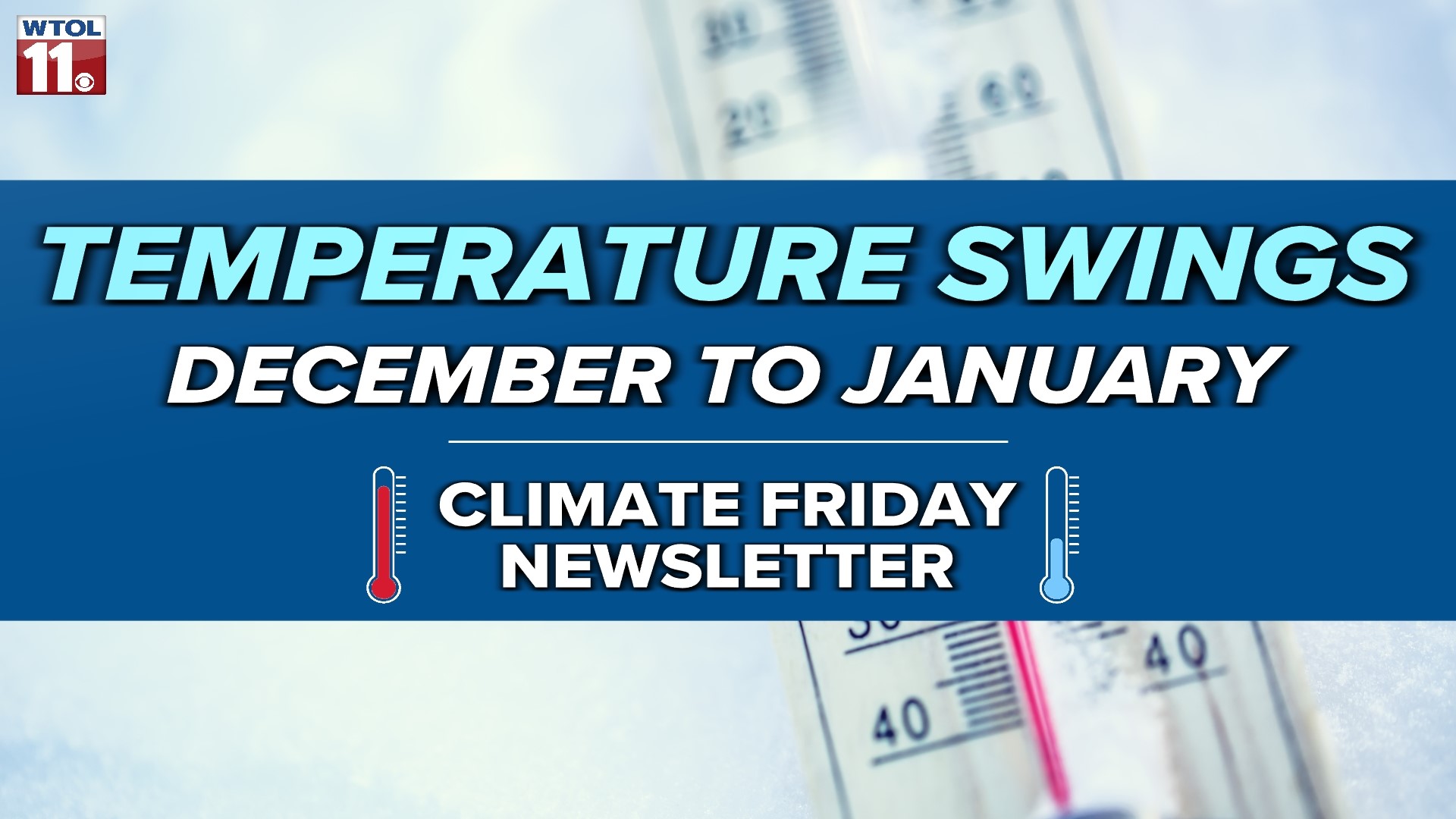TOLEDO, Ohio — Following the mildest December on record in the Toledo area, January will bring a significant shift in the weather pattern toward a wintry chill. The WTOL 11 Weather Team is forecasting the coldest conditions of the season through the middle to latter half of the month. In this week's edition of Climate Friday, Meteorologist John Burchfield will preview the bitterly cold temperatures coming next week.
First off, let's recap the historically mild December that featured the warmest conditions in 150 years of weather observations. With an average of 41.7 degrees, December delivered temperatures 8.9 degrees above average. December failed to bring a single day with a high temperature below freezing. Normally, December doses out 9 to 10 days with a high temperature below 32.
Though January has started off warmer than average, the sharp drop in temperatures following this weekend's ALERT DAYs will swing the pendulum in the other direction. The WTOL 11 Weather Team is forecasting several nights with overnight lows near to below zero.


The "feels like" temperature may dip even lower due to strong winds behind the weekend storm, and several mornings next week will bring negative wind chills. Despite the bitterly cold forecast through mid to late January, this pattern shift will likely not offset the historic December, and winter as a whole will remain above average as a whole.
This dramatic shift in the weather may seem unusual, but how common are temperature swings in Ohio and Michigan? Several shifts in the weather have delivered rapid changes in temperature in recent years. You may recall the winter storm before Christmas 2022 that brought blowing snow and bitter temperatures. Before the storm, northwest and Ohio and southeast Michigan enjoyed balmy temperatures in the 40s.
Following a powerful cold front, thermometers plunged below zero with wind chills as low as -30 degrees. This rapid flash freeze featured a change in apparent temperatures, or "feels like", of 70 degrees in just 24 hours. The actual air temperature dropped from 45 to -3 degrees from Dec. 22-23. The bitter cold continued through the Christmas holiday before rebounding after the New Year.


EARLIER COVERAGE: How fast can temps drop in northwest Ohio? A look at historical weather data in Toledo and beyond
What about temperature swings during the month of January? Last January brought a roller coaster of temperatures ranging from 61 degrees on Jan. 4 to 6 degrees on January 31. Ups and downs in the temperature department are fairly common this time of year.
When the temperature bottoms out in January, it often stays cold for a long duration. January, 2022 brought a sustained stretch of cold weather with 9 consecutive low temperatures below 10 degrees. From Jan. 21 to Jan. 29, temperatures dropped to the single-digits or colder. This bitterly cold stretch of weather culminated in a frigid -5 degrees on Jan. 29. The upcoming 10-day forecast features the coldest January weather since 2022.


While these temperature swings here at home may seem extreme, other parts of the country have experienced even more dramatic changes. The northern Great Plains region is notorious for rapid temperature swings.
Browning, Montana holds the record for the greatest 24 hour temperature change. In 1916, the air temperature plummeted from 44 degrees to -56 degrees, representing a massive 100 degree temperature swing from January 23-24.
Also in Montana, the city of Fairfield experienced the most extreme 12 hour temperature change the day before Christmas, 1924. Temperatures plummeted from 63 to -21 degrees, representing an 84 degree swing in just half a day. Though these rapid fluctuations in temperature are extreme, areas of the northern Plains such as Montana often feel significant shifts in thermometer readings.
As a wintry chill moves in this weekend, the WTOL 11 weather team will update you on potential impacts of the cold weather. This weather pattern will likely continue into the latter half of the month, and hopes of warmer weather may have to wait a few more weeks. Meteorologist John Burchfield will bring you the latest climate-related information each Friday.


PREVIOUS EPISODES OF CLIMATE FRIDAY ON WTOL 11

